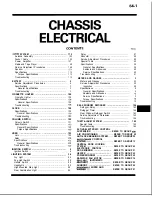
4-2
Stinger® MS+ Getting Started Guide
Stinger Operational Overview
Stinger ATM switching overview
Stinger ATM switching overview
A Stinger unit receives ATM cells on a link that is identified by a pair of unique
attributes. These attributes are known as the virtual path identifier (VPI) and the
virtual channel identifier (VCI). The Stinger unit switches the cells from an incoming
link to an outgoing link, based on the VPI and VCI attributes of each link. The
connection between these links is usually a static configuration entered by an
administrator, although a more dynamic method of forming link connections, known
as a private network-to-network interface (PNNI), might be used.
This guide covers only basic installation information and configuration of the control
module. More detailed information about configuring the unit to support ATM traffic
can be found in the
Stinger ATM Configuration Guide
and the
Stinger Private
Network-to-Network Interface (PNNI) Supplement.
Stinger configuration overview
Before you configure a Stinger MS+ unit, create a diagram that illustrates how the
unit will interoperate with your current network configuration. Creating a
comprehensive network diagram helps prevent problems during installation and
configuration, and can help in troubleshooting any problems later.
Stinger MS+ configuration tasks include the following:
■
Configuring the control module
■
Configuring the DSL line interface modules (LIMs)
■
Configuring the trunk module
■
Defining ATM traffic contracts
■
Configuring connections, either locally or through RADIUS
Control module configuration
The control module has an RS-232 serial port (labeled DIAG PORT) and a
10/100BaseT Ethernet port. The serial port is for system management from a local
workstation. It is also the standard port for error output, stack traces, and messages in
the event of a system crash. Until you have configured an IP address on the Ethernet
interface of the control module, you must use a local terminal or workstation
connected to the serial port of the control module to configure the Stinger MS+ unit.
There is no other way to log into the unit to perform the initial configuration.
The Ethernet port on the control module is intended for light data and management
traffic. Once you have assigned an IP address, you can Telnet into the unit from a
local host and download configuration files from a TFTP server to the Stinger system.
A Stinger unit has a range of options for configuring IP and for protecting the unit
from unauthorized administrative access.
Line interface module (LIM) configuration
A Stinger unit supports any combination of ADSL, HDSL2, SHDSL, IDSL, or SDSL
ATM modules. Each port on a LIM has a variety of configuration options, including
line rates and bandwidth. The way you configure each line depends on your
connectivity needs.




































